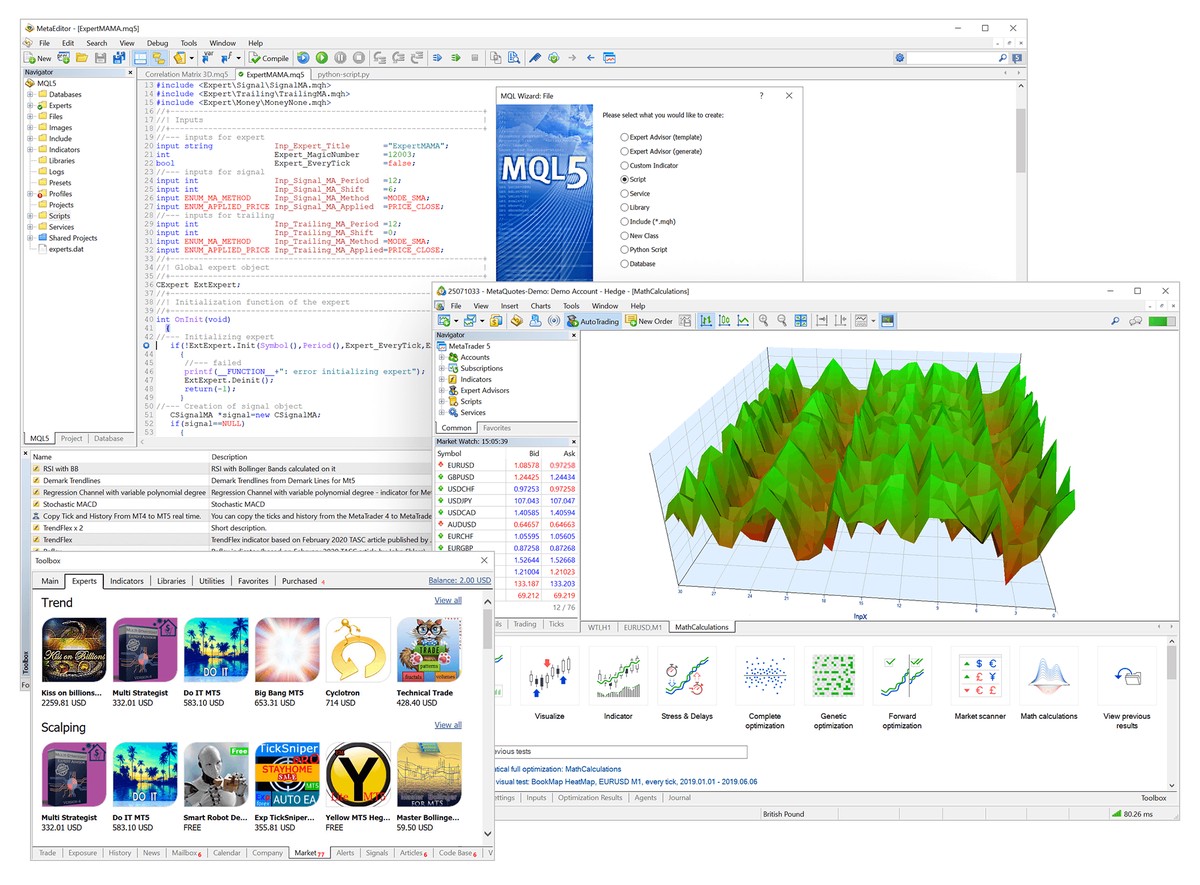

TL;DR
Beta strategies are essential tools for beginner traders aiming to manage risk and optimize their portfolios.
Understanding beta—a measure of an asset’s volatility relative to the overall market—is key to developing effective trading strategies.
This guide explores various beta strategies for beginners, comparing traditional and advanced methods.
Learn how to integrate beta into quantitative trading, portfolio management, and risk mitigation.
Practical advice, real-world examples, and beta calculation techniques will be provided to help traders effectively utilize this crucial metric.
Table of Contents
What is Beta and Why Should Beginner Traders Care?
How to Calculate Beta: A Simple Guide for Beginners
Basic Beta Strategies for Beginners
Advanced Beta Strategies: When to Take it to the Next Level
How to Apply Beta in Portfolio Risk Management
Why Beta Varies Across Sectors and How to Use It
Case Studies: Real-World Applications of Beta Strategies
Practical Tips for Beginner Traders Using Beta
FAQ
Conclusion: Mastering Beta for Smarter Trading Decisions
- What is Beta and Why Should Beginner Traders Care?
Understanding Beta in Trading
In finance, beta is a measure of an asset’s volatility relative to the overall market. Essentially, it indicates how much an asset’s price is expected to move in relation to market movements.
Beta = 1: The asset’s price will generally move in line with the market.
Beta > 1: The asset is more volatile than the market.
Beta < 1: The asset is less volatile than the market.
For example, a stock with a beta of 1.5 will typically move 1.5 times more than the market. If the market rises by 10%, this stock may rise by 15%, and if the market falls by 10%, the stock may fall by 15%.
Why Beta Matters for Beginner Traders
As a beginner trader, understanding beta is important for several reasons:
Risk Assessment: Beta helps traders understand the risk associated with individual assets in relation to the market.
Portfolio Diversification: By selecting assets with varying betas, traders can create a more balanced portfolio that aligns with their risk tolerance.
Strategic Decision Making: Beta can guide decisions on when to take on more risk or when to hedge against potential downturns in the market.
- How to Calculate Beta: A Simple Guide for Beginners
Beta Calculation: The Basics
To calculate beta, traders use historical data to compare the asset’s returns with the overall market’s returns. Here’s a simple formula:
β=Covariance of asset returns with market returnsVariance of market returns
β=
Variance of market returns
Covariance of asset returns with market returns
Step-by-Step Calculation
Collect Historical Data: Obtain historical price data for the asset and the market index (e.g., S&P 500).
Calculate Returns: Compute the returns for both the asset and the market for each period.
Covariance: Calculate the covariance between the asset’s returns and the market’s returns.
Variance: Compute the variance of the market’s returns.
Divide Covariance by Variance: This will give you the beta of the asset.
While this method works for most assets, there are also specialized beta calculators and software solutions that can automate the process.
- Basic Beta Strategies for Beginners
- Using Beta for Portfolio Diversification
For beginners, one of the simplest ways to use beta is through portfolio diversification. By selecting assets with different betas, you can adjust your overall portfolio’s risk profile.
High Beta Assets (Beta > 1): Suitable for traders looking for higher risk and potential returns. These assets tend to outperform in bullish markets but can underperform in bear markets.
Low Beta Assets (Beta < 1): Ideal for risk-averse traders who want more stability. These assets are less sensitive to market swings and are typically defensive stocks, like utilities or consumer staples.
Example Portfolio Construction
A balanced portfolio might consist of:
40% High Beta stocks (aggressive growth stocks).
40% Low Beta stocks (defensive or dividend-paying stocks).
20% Market Index ETFs (for stable returns that track the broader market).
- Hedging with Beta Adjustments
Beginner traders can also use beta to hedge against market movements. If you have a high-beta stock, you might offset its risk by holding a low-beta asset or a market index fund.
For instance, if you hold a high-beta stock like a tech company (Beta > 1.5), you could balance the risk by buying an inverse ETF or holding low-beta bonds to protect your portfolio in case of market downturns.
- Advanced Beta Strategies: When to Take it to the Next Level
- Using Beta in Quantitative Trading
For more experienced traders, quantitative models can leverage beta for market timing and trade execution. By analyzing beta trends, traders can predict market movements and adjust positions accordingly.
Example: Trend-following Beta Strategy
By analyzing historical beta trends for a stock, you could determine if its beta is increasing (indicating higher risk and potential volatility). If beta increases during a market rally, you may take a larger position in that asset.
- Beta-Weighted Portfolio Construction
Another advanced method is creating a beta-weighted portfolio, where the portfolio’s overall beta is adjusted based on the investor’s risk tolerance.
Target Portfolio Beta: For example, if your target portfolio beta is 0.8 (lower risk), you can adjust the weights of individual assets to match this target.
Dynamic Beta Adjustments: Actively change the portfolio’s beta by swapping high-beta stocks with low-beta stocks based on market conditions.
- How to Apply Beta in Portfolio Risk Management
Understanding how beta influences portfolio risk is crucial for all traders. Risk management is not only about diversifying assets but also about understanding the level of systematic risk (market risk) each asset contributes.
Using Beta for Risk Mitigation
Low Beta for Stability: During uncertain market conditions or downturns, shift towards low-beta assets to minimize exposure.
High Beta for Bullish Markets: In a strong bull market, allocate more to high-beta stocks for greater potential returns.
Case Example: Portfolio Rebalancing
Let’s assume your portfolio’s beta is 1.3, indicating higher risk. As the market becomes more volatile, you could reduce the number of high-beta stocks and increase your holdings of low-beta defensive stocks to reduce overall portfolio risk.
- Why Beta Varies Across Sectors and How to Use It
Different sectors and industries exhibit varying levels of beta based on their inherent volatility. Understanding sector-specific beta trends is essential for creating a balanced portfolio.
Examples of Sector Beta Differences:
Tech Stocks: Typically have higher beta values due to their high volatility and growth potential.
Utilities: These stocks tend to have lower beta values because they are less sensitive to market fluctuations and often provide steady returns.
By choosing assets with varying betas from different sectors, you can optimize your portfolio’s performance in both volatile and stable market conditions.
- Case Studies: Real-World Applications of Beta Strategies
Case Study 1: Beginner Trader Using Beta for Diversification
A beginner trader wanting to balance risk in a growth-heavy portfolio could utilize a mix of high-beta growth stocks (like Amazon or Tesla) and low-beta consumer staples (like Procter & Gamble or Coca-Cola) to create a more stable investment profile.
Case Study 2: Advanced Trader Using Beta for Quantitative Modeling
An experienced trader might use a dynamic beta-weighted strategy, shifting between growth and defensive stocks based on market sentiment and economic indicators. This approach allows for more precise risk management and better market timing.
- Practical Tips for Beginner Traders Using Beta
Start Simple: Begin by using beta for basic portfolio diversification. Avoid overly complex strategies until you’re comfortable with beta’s basic concepts.
Monitor Regularly: Beta is not static—regularly check how your assets’ betas change in response to market conditions.
Don’t Rely Solely on Beta: While beta is a valuable risk measure, combine it with other fundamental analysis tools to get a comprehensive view of your assets.
- FAQ
Q: How do I find the beta value of a stock?
A: Beta values are commonly available

0 Comments
Leave a Comment